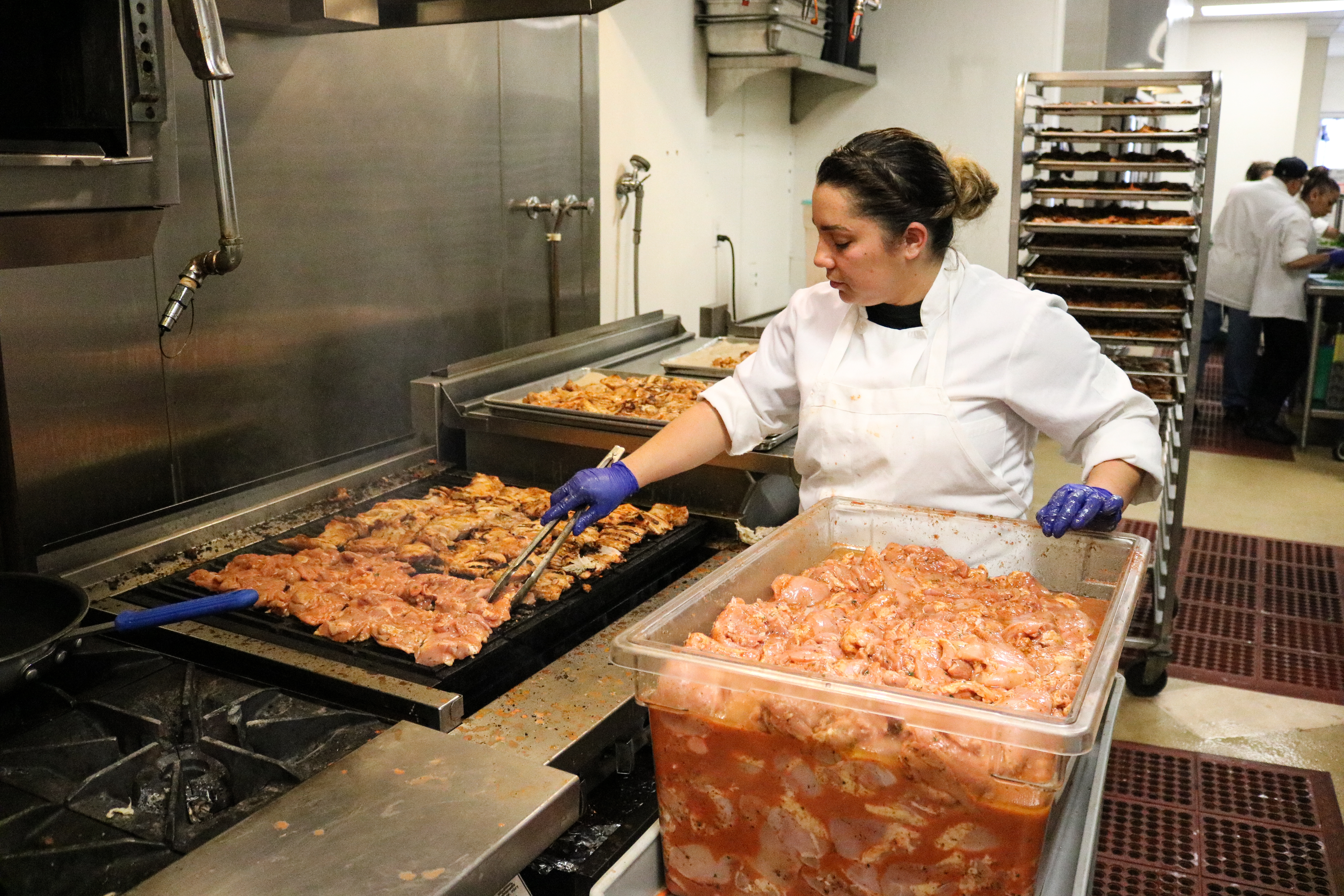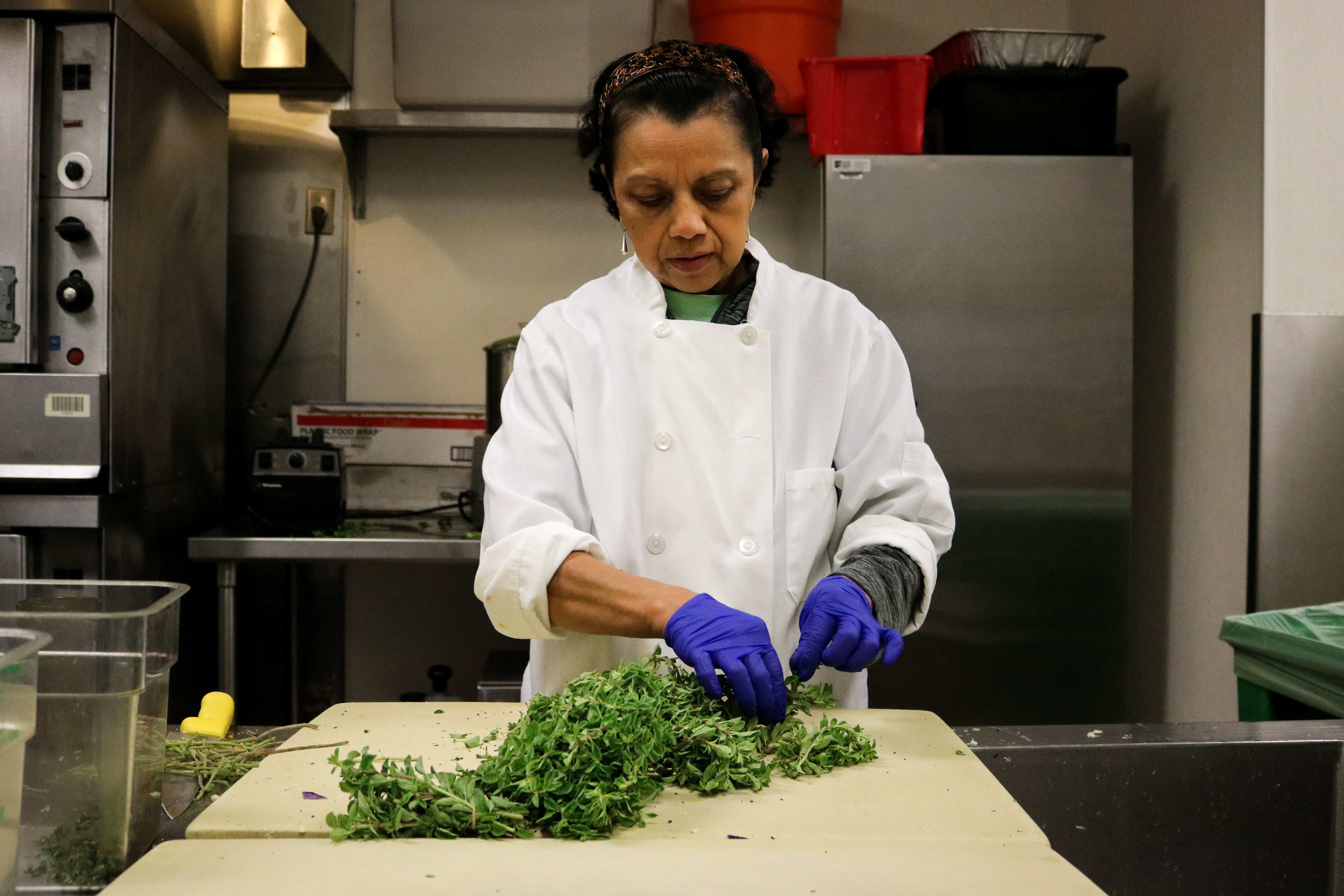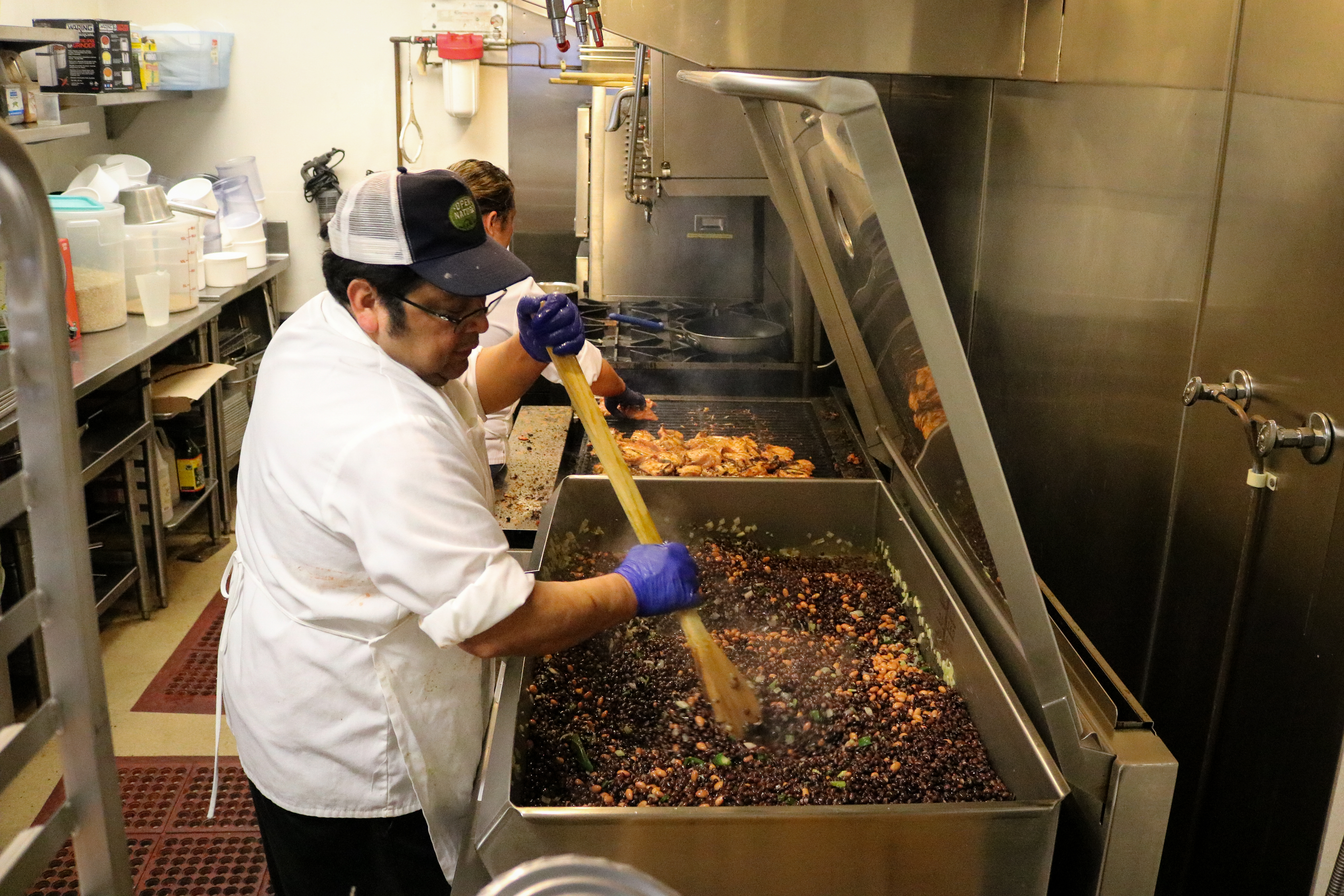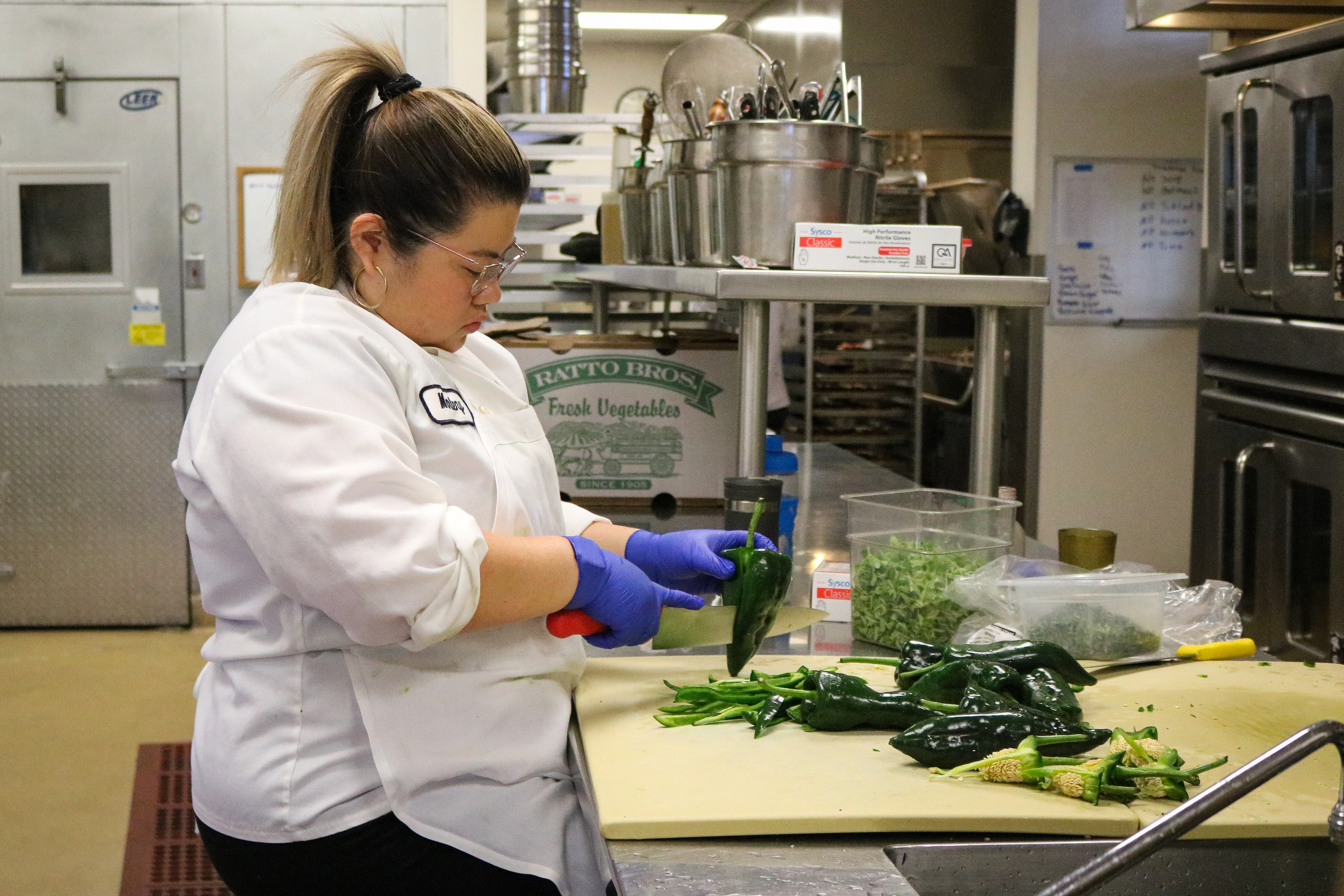
Photo by Gabe Castro-Root
It was just before 6 a.m., and there was only one thing on the minds of all three people on LWHS’s campus: lunch.
The sun was still well below the horizon, but after a brief meeting to review that day’s meal-prep list, the kitchen staff got to work chopping, seasoning and grilling.
Some preparations had been made the previous day—with over 500 people to feed each day, the kitchen staff often chops vegetables in advance, allowing them to focus on more time-sensitive tasks, such as preparing raw meat, the day-of.
“There’s no way we could do it all in one day,” said Kathleen Fazio, LWHS’s Director of Food Services. “It’s crazy to feed that amount of people in that amount of time.”
Crazy as it may be, she and the rest of the kitchen staff get it done each day. They plan to have the hot meal ready to serve by 11:30 a.m., ensuring that there’s food available when students get out of class 20 minutes later.
Fazio stressed that as the student body has expanded in recent years, the kitchen staff has at times struggled to keep up.
“The school keeps growing and the kitchen doesn’t,” she said. “The entire campus is an onslaught that comes at you, and then within 15 minutes they’re all gone. I’ve never had it quite like this before, anywhere I’ve ever worked.”

Photo by Gabe Castro-Root
LWHS has a scratch-cooking kitchen, which means that all the food they serve is made in-house from raw ingredients.
“We’re one of the few scratch-cooking kitchens left anywhere, not just in the Bay Area,” Fazio said. Because of that, “it’s pretty much flat out from the minute we walk in here to the minute we walk out the door.” She made a chopping motion with her hands to illustrate the point.
Three members of the kitchen staff begin work at 6 a.m. each day, with the other six members arriving over the next two and a half hours. Deliveries of fresh produce and dairy products are dropped off in pallets outside the kitchen each day between 4 and 6 a.m., ensuring that they’re there waiting when the staff arrives. Semifreddi’s sandwich bread and bagels arrive around the same time, and other dry goods are delivered two or three times per week, as needed.

Photo by Gabe Castro-Root
While each staff member is assigned a set of tasks each day, the natural fluidity of cooking enormous quantities of food requires them to be flexible and willing to do whatever is needed.
“We all do everything,” said Marleny Chan, who works in the kitchen and as a cashier in the Caf. “We always try to work together and make teams.”
One of the biggest challenges for the kitchen staff is making sure all the food is seasoned properly, and that the taste is consistent across every batch they make. “When you’re cooking at this volume, you don’t season exponentially,” Fazio said with a chuckle. “If you were using a teaspoon of salt on a pound of chicken, you do not use 300 teaspoons of salt on 300 pounds of chicken. It would be inedible!”
To make sure the food tastes consistently good, Fazio goes around the kitchen tasting and making recommendations to the staff on how to adjust their seasoning to achieve optimal flavor. “That’s the most important part of my job,” she said.
Fazio declined to say how much money the school spends on food, but emphasized that it was “a lot.”
“I had my own restaurant, I worked in a lot of restaurants, I was the food services director at the Edgewood Center for Children and Families for 13 years,” she said. “I’ve never had a budget this generous.”

Photo by Gabe Castro-Root
The kitchen staff makes enough of the hot meal to serve roughly 375 people, “plus an additional 10 percent,” Fazio said. Ultimately, though, predicting how many people will choose the hot meal or get a salad or sandwich is “a shot in the dark.”
After students have the opportunity to get seconds, faculty and staff are allowed to take home what remains. After that, any unclaimed food gets picked up by the non-profit Food Runners, which brings it to the Edgewood Center where Fazio used to work. Edgewood, in San Francisco’s Sunset District, provides residential mental health services for children and families across the Bay Area.
As the kitchen staff prepared lunch one day in early March, teamwork and collaboration were essential tools for success. Chan and Juana Morales joked together as they diced peppers. Mario Chacón and M. Josselin Caballero chatted as he mixed black beans with onions and she grilled chicken.
It was the first day of staggered lunch times, as the COVID-19 outbreak plunged the future of LWHS’s school-year into uncertainty. The meal that day was Mayan chicken—what Chan had described as the most difficult lunch they make.
Fazio made her way around the kitchen, checking on everyone’s progress and always keeping one eye on the clock.

Photo by Gabe Castro-Root
Lunchtime was, to use Fazio’s word, “frenetic.” For the first time ever, each grade came into the Caf separately, and teachers passed out silverware and salad so as to avoid unnecessary contamination.
The kitchen staff worked quickly to fill plates and keep the line moving. When everyone had been served, they returned to the kitchen to clean and begin preparing for the following day’s lunch.
After a demanding six to eight hours of work, much of the kitchen staff left campus between 1 and 2 p.m. They’d be back before sunrise the next day.

Photo by Gabe Castro-Root






